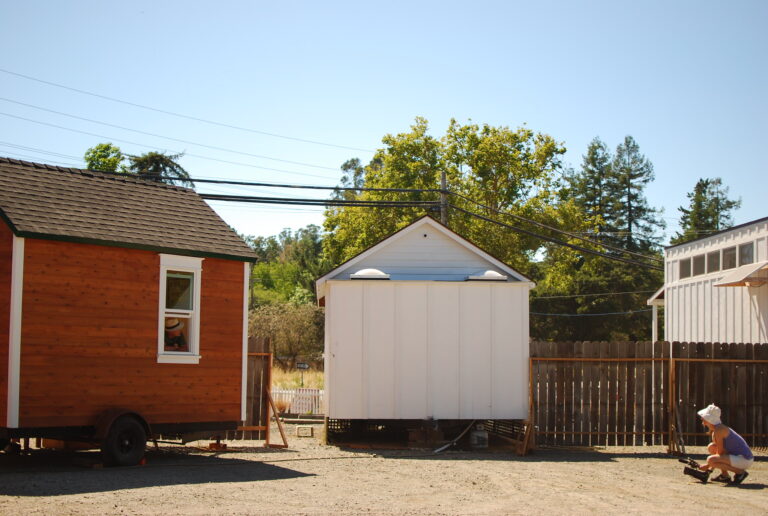Published on April 20, 2022

Ty Charnicky gripped a broom and smiled as he swept the floor. It wasn’t dirty. He swept it often.
“When I was in the car, I did this to the car too. I cleaned it out at least once a week. I did my laundry once a week,” Charnicky said, before straightening some of his belongings on a nearby table. “You know, I’m still living!”
It was Charnicky’s second week living in a metal, 8-by-8-foot cabin purchased by the city of Vancouver. He kept it tidy. He was enjoying a “homeostasis improvement” over the recent months he’d spent sleeping in his car.
“It’s about where am I going to be warm tonight? Where am I going to be safe tonight? Where am I going to sleep and no one is going to tell me ‘Move your car?’” he said.
Charnicky’s cabin — and 19 others that line the Vancouver cul de sac — are a product from the Everett, Washington, company Pallet. Lately, the compact dwellings are becoming a common sight in cities looking to build new forms of shelter for their homeless populations.
Pallet has boomed in the pandemic. According to CEO Amy King, sales figures jumped from $250,000 in 2019 to $10 million in 2020. Today, the shelters are in more than 70 communities, up from just three in 2019.
In Tacoma, the first city to do business with Pallet, city staff are bullish. They own 58 of the shelters, through which about 570 individuals have passed. City staff estimate 20-30% of people move into housing after staying in a Pallet shelter.
“That’s pretty high compared to other, more conventional congregate shelters,” said Matt Jorgensen, who oversees Tacoma’s shelter programs.
Jorgensen said Tacoma initially expected its contract with Pallet would last three years. It’s now year five.
“As our city leadership saw the success of folks getting stabilized and moved into housing, they saw it as more of an asset to maintain, (to) keep that in the community as a resource for folks to get connected and into housing,” he said.
Experts on homelessness say cities can’t rely on building shelter alone. Gregg Colburn, a University of Washington professor and a housing policy analyst, said even well-run shelters can’t fully help a person if there’s no housing to move into.
“I hope it’s not a bridge to nowhere,” Colburn said. “If we build tiny homes or other temporary structures, and in three years people are still living in those temporary structures… what happens now?”
New York City has demonstrated that, Colburn pointed out. The city has capacity to shelter tens of thousands of people any given night. But, Colburn said, that has done little to reduce homelessness.
“They’ve spent billions and billions of dollars on that system over the last 20 or 30 years in New York City,” he said. “So yes, they’re off the street. But now they’ve created a very expensive and less-than-ideal system in which people end up getting warehoused within that system.”
Continue reading at OPB.
Originally written by Troy Brynelson for OPB.